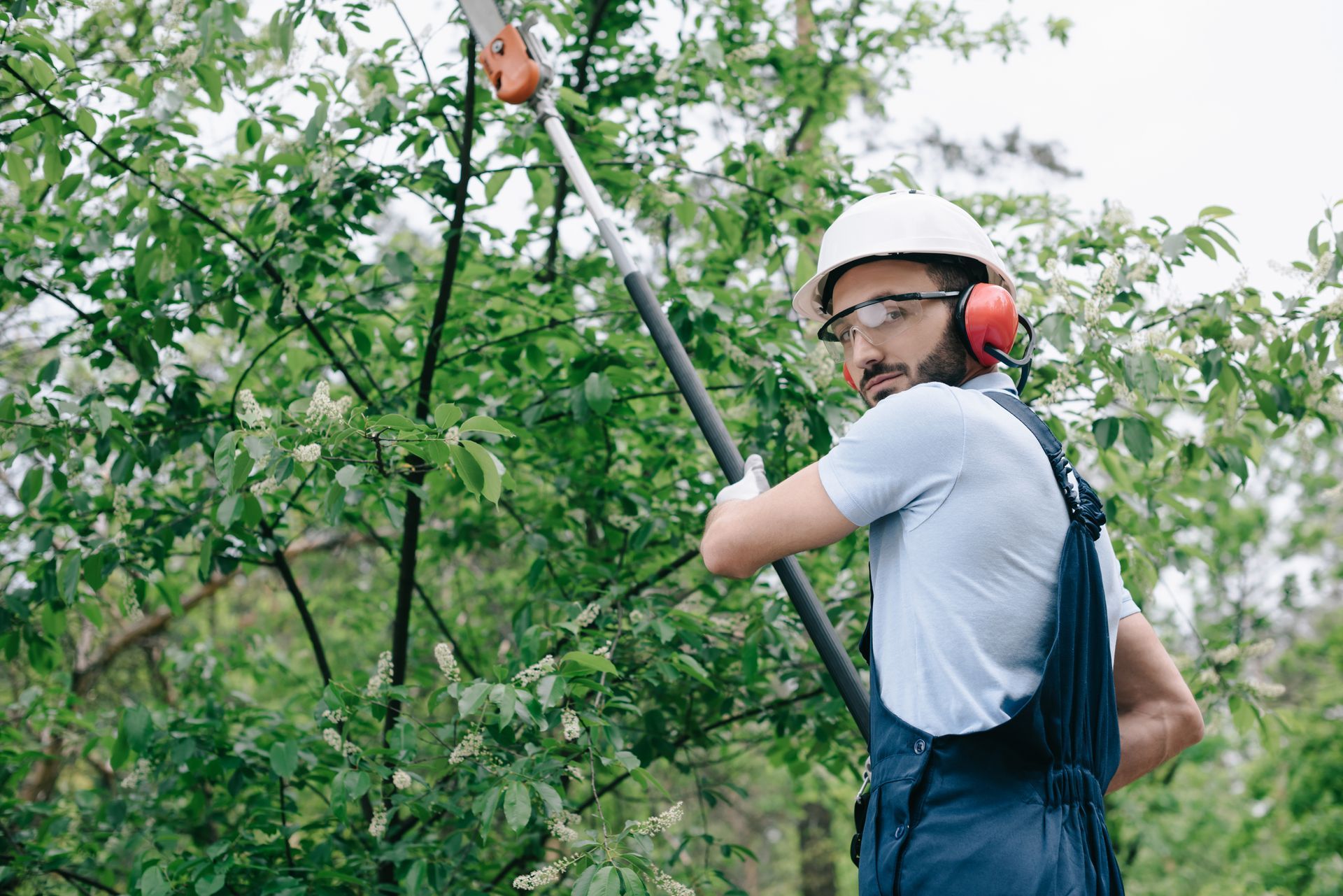Top 3 Recommended Policies
Index
Contact Us
Phone
Location
Tree trimming is an essential service that enhances the beauty and health of trees in residential and commercial properties. However, it is also a profession that comes with its own set of risks and challenges. For tree trimmers, having the right insurance coverage is crucial to protect against potential liabilities and unforeseen events. This article will delve into the various aspects of tree trimmer insurance, including its importance, types of coverage, and tips for selecting the right policy.
Understanding Tree Trimmer Insurance
Tree trimmer insurance is a specialized form of insurance designed to protect tree care professionals from various risks associated with their work. This insurance provides coverage for property damage, bodily injury, and other liabilities that may arise while performing tree trimming services. Understanding the specifics of this insurance is vital for both tree trimmers and their clients.
The Importance of Insurance in Tree Trimming
Tree trimming can be a hazardous job. Workers often operate heavy machinery, climb tall trees, and work in unpredictable weather conditions. Without proper insurance, a single accident could lead to significant financial losses. Insurance not only safeguards the tree trimmer but also provides peace of mind to clients, knowing that they are protected in case of mishaps.
Moreover, many clients now require proof of insurance before hiring a tree trimming service. This requirement protects them from potential lawsuits and ensures that the tree trimmer is a professional who takes safety seriously. In this way, having adequate insurance can also serve as a marketing tool for tree trimming businesses. By showcasing their insurance coverage, tree trimmers can differentiate themselves from competitors and build trust with potential clients, ultimately leading to increased business opportunities.
Types of Coverage Available
Tree trimmer insurance typically includes several types of coverage. Understanding these options can help tree trimmers choose the right policy that meets their needs.
- General Liability Insurance: This coverage protects against claims of bodily injury or property damage that may occur during tree trimming operations. For instance, if a tree falls and damages a neighbor's property, general liability insurance can cover the costs.
- Workers' Compensation Insurance: This is essential for businesses with employees. It covers medical expenses and lost wages for workers who are injured on the job, ensuring that they are taken care of while recovering.
- Commercial Auto Insurance: Since tree trimmers often use vehicles to transport equipment and personnel, commercial auto insurance is necessary. This coverage protects against accidents involving company vehicles.
- Equipment Insurance: Tree trimming requires specialized equipment, which can be costly. Equipment insurance covers damages or theft of tools and machinery, ensuring that the business can continue operating without significant financial strain.
In addition to these standard coverages, some tree trimmers may also consider additional options such as professional liability insurance, which protects against claims of negligence or failure to perform services as promised. This type of coverage can be particularly important for those who provide consulting services or detailed assessments of tree health. Furthermore, as environmental concerns grow, some insurance providers are beginning to offer policies that include coverage for eco-friendly practices, such as sustainable tree care methods or the use of biodegradable products, which can appeal to environmentally conscious clients.
Understanding the nuances of each type of coverage and how they apply to specific scenarios can empower tree trimmers to make informed decisions about their insurance needs. Regularly reviewing and updating their policies is also crucial, as the nature of their work may evolve over time, requiring adjustments in coverage to ensure comprehensive protection. By staying informed and proactive, tree trimmers can better navigate the complexities of their profession while minimizing risks associated with their essential services.

Factors Influencing Insurance Costs
The cost of tree trimmer insurance can vary significantly based on several factors. Understanding these factors can help tree trimmers budget for their insurance needs effectively.
Business Size and Scope
The size of the tree trimming business plays a critical role in determining insurance costs. Smaller businesses with fewer employees may pay less than larger companies with extensive operations. Additionally, the scope of services offered can affect premiums; businesses that provide a wider range of services may face higher risks, leading to increased costs. For instance, a company that not only trims trees but also offers stump removal, landscaping, and emergency tree services may encounter more complex liabilities, necessitating broader coverage. This complexity can result in higher premiums as insurers account for the diverse risks associated with each service.
Location and Risk Factors
The geographical location of the business also impacts insurance rates. Areas prone to severe weather conditions, such as hurricanes or heavy snowfall, may have higher premiums due to increased risk of accidents and property damage. Furthermore, urban areas with dense populations may present additional liability risks, influencing the overall cost of insurance. In contrast, businesses located in rural areas might benefit from lower rates, as the likelihood of accidents and property damage may be reduced. However, it's essential to consider local regulations and environmental factors, such as proximity to power lines or wildlife, which can also affect insurance requirements and costs.
Claims History
A business's claims history is another crucial factor. Companies with a history of frequent claims may face higher premiums, as insurers view them as higher risk. Conversely, businesses with a clean claims record may benefit from lower rates and discounts. Additionally, maintaining a proactive approach to risk management, such as implementing safety training programs and adhering to industry best practices, can significantly improve a company's claims history. Insurers often reward such diligence with lower premiums, recognizing that businesses that prioritize safety are less likely to file claims. This not only helps in reducing costs but also fosters a culture of safety within the organization, ultimately benefiting both employees and clients alike.
Choosing the Right Insurance Policy
Selecting the right insurance policy can be a daunting task, especially for those new to the tree trimming industry. Here are some tips to help navigate this process.
Assess Your Needs
Before shopping for insurance, it’s essential to assess the specific needs of your business. Consider the types of services you offer, the number of employees you have, and the equipment you use. By understanding your unique risks, you can choose a policy that provides adequate coverage without paying for unnecessary extras. For instance, if you frequently work in residential areas, you may need liability coverage that protects against property damage or injuries that could occur on a client’s property. Additionally, if you operate specialized machinery, equipment insurance can safeguard against potential losses due to theft or damage.
Compare Quotes from Multiple Insurers
Insurance rates can vary widely between providers, so it’s wise to obtain quotes from multiple insurers. This process not only helps you find the best price but also allows you to compare the coverage options each policy offers. Look for insurers that specialize in tree care or landscaping, as they will better understand the unique risks associated with your work. Furthermore, don’t hesitate to ask about discounts for bundling multiple policies, such as general liability and workers' compensation, which can lead to significant savings while ensuring comprehensive coverage for your business.
Read Reviews and Seek Recommendations
Before finalizing your decision, take the time to read reviews and seek recommendations from other tree trimmers or industry professionals. Their experiences can provide valuable insights into the reliability and customer service of different insurance providers. Additionally, consider consulting with an insurance broker who specializes in commercial insurance for further guidance. Brokers can help you navigate the complexities of policy details, ensuring that you understand the fine print and any exclusions that could affect your coverage. Engaging with local trade associations or online forums can also yield helpful advice and firsthand accounts of what to expect from various insurance companies in the tree trimming sector.

Common Exclusions in Tree Trimmer Insurance
While tree trimmer insurance provides essential coverage, it’s crucial to be aware of common exclusions that may apply. Understanding these exclusions can help tree trimmers avoid unexpected gaps in coverage.
Intentional Damage
Insurance policies typically do not cover damages resulting from intentional acts. If a tree trimmer intentionally damages property or injures someone, the insurance company will deny the claim. It’s essential to maintain professionalism and adhere to safety protocols to avoid such situations. Furthermore, the repercussions of intentional damage can extend beyond financial liability; they can also tarnish a company's reputation. Clients are likely to think twice before hiring a tree trimmer with a history of negligence or intentional misconduct, which can lead to a loss of business opportunities and trust in the community.
Wear and Tear
Most insurance policies do not cover damages resulting from normal wear and tear of equipment. Tree trimmers should regularly maintain their tools and machinery to prevent breakdowns and ensure safe operation. Investing in routine maintenance can save money in the long run by reducing the likelihood of equipment failure. Additionally, keeping detailed maintenance records can be beneficial not only for operational efficiency but also for demonstrating diligence in case of an insurance claim. A well-maintained fleet of equipment can enhance productivity and safety on the job site, allowing tree trimmers to complete tasks more efficiently and effectively.
Non-Compliance with Safety Regulations
Insurance providers may deny claims if the tree trimmer fails to comply with safety regulations or industry standards. It’s crucial to stay informed about safety practices and ensure that all employees are trained accordingly. Regular safety meetings and training sessions can help reinforce the importance of compliance. Moreover, implementing a robust safety program can lead to a culture of safety within the organization, reducing the likelihood of accidents and injuries. This not only protects the workforce but also minimizes the risk of costly insurance claims, ultimately contributing to the overall success and sustainability of the business.
The Claims Process
Understanding the claims process is vital for tree trimmers to ensure they can effectively navigate any incidents that may arise. Here’s a breakdown of the typical steps involved in filing a claim.
Report the Incident
As soon as an incident occurs, it’s essential to document the details. This includes taking photographs of the scene, collecting witness statements, and noting any relevant information. Promptly reporting the incident to your insurance provider is crucial, as delays can complicate the claims process. Additionally, it may be beneficial to create a timeline of events leading up to the incident, as this can provide valuable context and assist in the investigation of the claim.
Complete the Necessary Paperwork
After reporting the incident, your insurance provider will guide you through the paperwork required to file a claim. This may include filling out claim forms and providing supporting documentation. Ensure that all information is accurate and complete to avoid delays in processing your claim. It’s also wise to keep copies of all submitted documents for your records, as this can help in future correspondence with your insurer and serve as a reference if any discrepancies arise.
Follow Up Regularly
Once your claim is submitted, it’s essential to follow up regularly with your insurance provider. This ensures that your claim is being processed and allows you to address any questions or concerns that may arise. Communication is key to a smooth claims process. Consider setting reminders for yourself to check in at regular intervals, and don’t hesitate to escalate the matter if you feel your claim is not receiving the attention it deserves. Building a rapport with your claims adjuster can also be beneficial, as they can provide insights and updates that may not be readily available through standard communication channels.
Understand the Timeline
It’s important to have a clear understanding of the timeline for your claims process. Each insurance company has its own protocols and timelines, which can vary significantly depending on the complexity of the claim. Familiarize yourself with the typical timeframes for each stage of the process, from initial reporting to final resolution. This knowledge can help manage your expectations and reduce frustration as you navigate through the claims process. Additionally, being aware of any deadlines for submitting further documentation or appeals can be crucial in ensuring that your claim remains active and is processed in a timely manner.
Seek Professional Assistance
If you find the claims process overwhelming or if your claim is particularly complex, consider seeking professional assistance. Insurance adjusters or claims advocates can provide valuable guidance and support, helping you to understand your rights and responsibilities. They can also assist in negotiating with your insurance provider, ensuring that you receive the compensation you deserve. This can be especially important in cases where liability is disputed or when the damages are significant, as having an expert on your side can make a substantial difference in the outcome of your claim.
To maintain coverage and avoid potential issues, tree trimmers must stay compliant with their insurance requirements. Here are some tips to ensure ongoing compliance.
Regularly Review Your Policy
Insurance needs can change over time, especially as a business grows or evolves. Regularly reviewing your policy ensures that your coverage remains adequate. If you add new services, hire more employees, or acquire new equipment, it may be necessary to update your policy to reflect these changes.
Maintain Accurate Records
Keeping accurate records of all business operations, including employee training, safety meetings, and equipment maintenance, is essential. These records can be invaluable if a claim arises, providing evidence that you have taken necessary precautions to mitigate risks.
Stay Informed About Industry Changes
The tree trimming industry is constantly evolving, with new regulations and safety standards emerging. Staying informed about these changes can help tree trimmers remain compliant and avoid potential liabilities. Consider joining industry associations or attending workshops to stay updated.
Conclusion
Tree trimmer insurance is an essential aspect of operating a successful tree trimming business. By understanding the various types of coverage available, the factors influencing insurance costs, and the claims process, tree trimmers can make informed decisions that protect their business and clients. With the right insurance policy in place, tree trimmers can focus on providing excellent service while minimizing risks associated with their profession.
Ultimately, investing in tree trimmer insurance is not just a legal requirement; it is a commitment to safety, professionalism, and the longevity of your business. By prioritizing insurance, tree trimmers can build trust with their clients and ensure a sustainable future in the industry.

